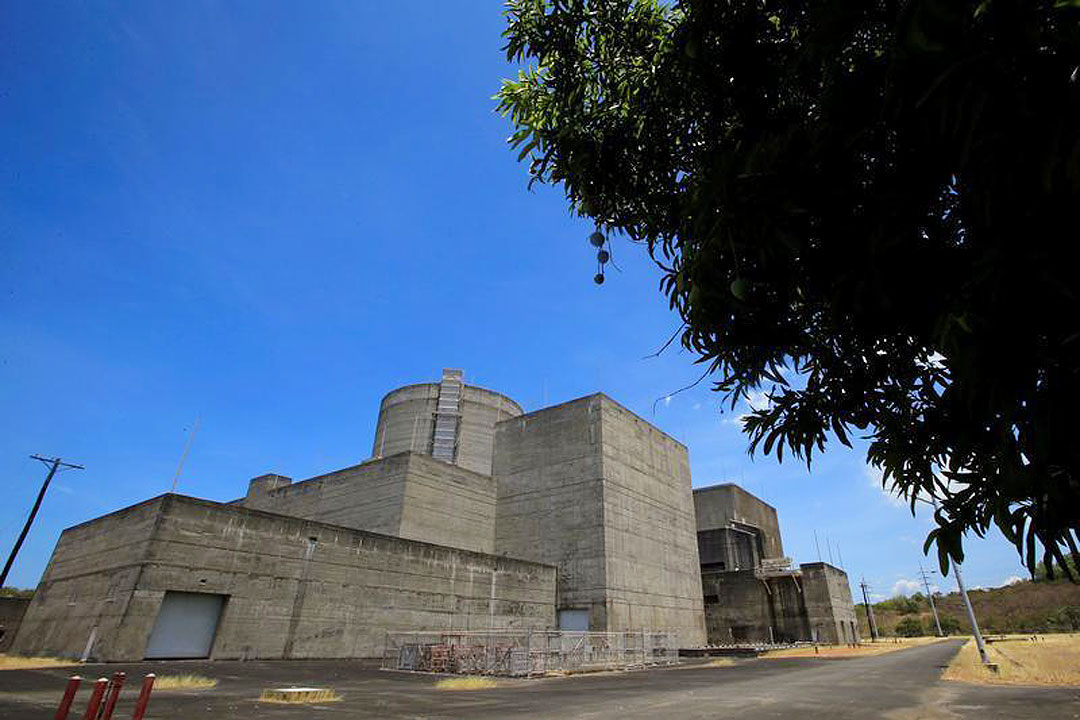DoE’s Lotilla outlines priorities; renewables and nuclear in focus

THE PHILIPPINES needs to diversify its sources of energy for the security of supply, the Energy chief said on Tuesday, as he outlined the administration’s priorities to include developing indigenous sources and possibly adopting nuclear energy.
“For power, this will include the 28,000 gigawatts of offshore wind which can be mobilized by 2030,” Department of Energy (DoE) Secretary Raphael P.M. Lotilla said in a briefing led by the country’s economic managers after the President’s State of the Nation Address (SONA) on Monday.
He also said that to achieve energy diversification, new technologies and nuclear solutions could be utilized to partly address energy supply issues.
“100% of our fuel requirements are imported. In the power sector, 45% of our plants use coal for fuel and 80% of that coal is imported. Another 11.8% of the fuel for power is oil-based,” said Mr. Lotilla, who gave his comments by phone in the event shown by state media.
“These show our country’s vulnerability to volatilities in global prices,” he said.
Mario C. Marasigan, director of the DoE’s Electric Power Industry Management Bureau, said during the briefing that while the country has a sufficient supply of liquid fuel and electricity, the cost is dictated by imported fuel.
Mr. Lotilla said that he had been instructed by President Ferdinand R. Marcos, Jr. that top priority should be given to addressing uncertainties regarding investment incentives to the upstream sector, especially natural gas.
He said one of these is the interpretation of Presidential Decree (PD) 87, which was issued to revamp petroleum legislation by introducing the service contracting system.
“PD 87 allowing the service contractor’s corporate taxes to form part of the government’s 60% net share has hindered investments and roll out in this sector. The DoE will be submitting a clear articulation of that policy. We will seek legislative articulation of that policy,” Mr. Lotilla said.
He also said that his department would pursue the electrification targets for households nationwide.
“There are still more than a million unserved households in the country, with more than 800,000 in Mindanao,” he said.
In Mr. Marcos’ SONA, he said that it is time to re-examine nuclear energy to attract more investors and ensure enough power supply. He said that cheap and reliable energy is a requirement for economic growth as it is related to the ease of doing business.
“There is some room to expand our present power supply through existing power sources, but this is only to a very limited extent. We must build new power plants. We must take advantage of all the best technology that is now available, especially in the areas of renewable energy,” he added.
Philippine Nuclear Research Institute Director Carlo A. Arcilla told Businessworld through Viber that adopting nuclear energy is feasible as long as there is political will.
Meanwhile, several energy companies and environmental groups were divided on the government’s energy agenda.
Philippine Energy Efficiency Alliance (PE2) President Alexander D. Ablaza said that energy efficiency should be planned as a primary resource when determining additional capacity requirements in the 2040 energy mix.
In a statement released by PE2, it said that Mr. Marcos’ push for a closer linkage between the energy sector and the country’s climate agreement compliance is a welcome policy statement.
It said that the President in his address sought “several reforms in the energy sector targeted toward increasing generation capacities, decarbonizing the supply-side of the power industry, while reducing energy prices.”
“What the energy efficiency industry was hoping to hear from his address however was the explicit scale-up of energy efficiency interventions as a cost-effective solution to support the energy security and decarbonization objectives of the Philippines,” it said.
Alternergy Holdings Corp. led by Energy chief Vicente S. Pérez, Jr. backed Mr. Marcos’ call to improve the mix of energy supply between traditional and renewable sources.
“This is a strong statement and sets a clear direction for the energy industry to rally behind [Mr. Marcos’] call to build new power plants and with the use of renewable energy,” Mr. Perez said, noting that Alternergy and its subsidiaries plan to bring some 1,245 MW of new renewable energy capacity in the next five years.
On the other hand, Greenpeace campaigner Khevin Yu described the government’s call to include nuclear in the country’s energy mix as a “dangerous” proposition.
Mr. Yu said that housing a nuclear plant in the Philippines is like building a ticking bomb because the country is often devastated by typhoons and earthquakes.
“Nuclear and fossil gas should be out of the picture today; it’s hypocritical to talk about addressing the climate crisis while prioritizing dangerous energy sources. If the President is sincere about acting on the environment and climate, he should head straight for genuine renewable energy — and stop promoting nuclear and fossil gas,” Greenpeace said in a press release. — Ashley Erika O. Jose



